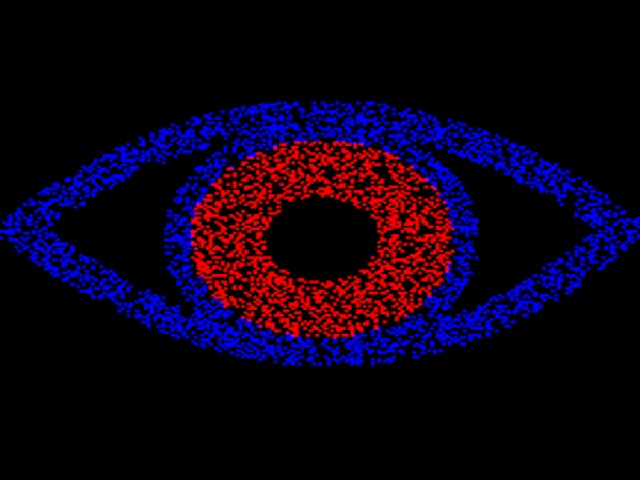Optical Illusion: Today we have brought the truest form of Optical Illusion to you today. Take a moment from your busy schedule and observe this Optical Illusion image given below that can challenge your perception and visual system at the same time.
This effect varies from person to person. What you see below in the image is called Depth Illusion. These types of illusion pictures play with your eye-mind coordination or the cognitive part of your brain.
| Optical Illusion: Only 1% Can Spot All 16 Tigers Before 40 Seconds, How Many Can You Find? |
| Optical Illusion: What You See in First 5 Seconds Reveals Your True First Impression On People |
Just take a look at the image below and tell us if you see anything there.
Optical Illusion: What do you see?
Here in this image, we have a blue iris in the red-eye socket. Yes, that's what you can see.

Now, all you need to do is keep looking at the image for five seconds. Did you also notice the socket coming on to you? This is the depth illusion effect.
Try one more thing now. Start blinking your eyes rapidly or try turning up the brightness of your screen. Now take a look at the image again. The effect on your eyes increases doesn’t it?
Now, let us try one more exercise to be fully sure how this optical illusion is working for us.
Try moving your head from side to side and notice if this depth effect is still visible to you.
Optical Illusion: What is the depth effect?
The effect is called chromostereopsis. This has several reasons for the effect it produces on the human mind. Chromostereopsis is a type of visual illusion where the impression is conveyed in two-dimensional images through two colours mainly red and blue. It is also visible with red-grey and blue-grey images. This effect results from chromatic aberration and it varies from human to human. 'Positive chromostereopsis is exhibited when the red bars are perceived in front of the blue and negative chromostereopsis is exhibited when the red bars are perceived behind the blue.'
So, some people would see the red floating instead of blue and others would see blue floating and red being stable. Some people would see no difference at all. It all depends on an individual's chromatin abilities, vision and perceptions.
As per scientist Tom Stafford, most people will think the colour red is closer and blue tends to move far away. He added, “There is an incredibly strong depth illusion – the blue and the red appear as if they are at different distances.”
Why is the effect not practical for some people?
The effect entirely depends on the wavelengths that affect your eye. Different colour wavelengths have different effects on human eyes and it varies from one individual to another. So, some people do not see the colours moving at all because this wavelength of blue and red does not affect their eyes.
Optical Illusion: Interpretations
One more interpretation is that a person who strongly perceives something would feel the colours moving. For most people it is red that seems to come forward to them. Check if you are more affected by the reverse effect here. Take a look at the image below.

Moreover, stereo depth illusions require two images at one time to notice their effects. This is how 3D cinema also works. Your visual system combines the image and ‘discovers’ depth information, adding to the 3D perception of the objects shown.
Both eyes are required for this optical illusion effect:
The chromostereopsis effect requires both eyes to focus on the image. Try closing one eye and looking with the other. No effect right?
The effect seems to disappear once you close one of your eyes. This image stays the same, but it has to go in both eyes for the illusion of depth to occur.
We hope you came out to be a strong-minded person in the optical illusion test above. Enjoy reading these as well:
| Optical Illusion: How Many Women Can You Spot In Less Than A Minute? Optical Illusion: Are You A Dog Or Cat Person? What You See First Reveals Your Personality Traits! |
Comments
All Comments (0)
Join the conversation